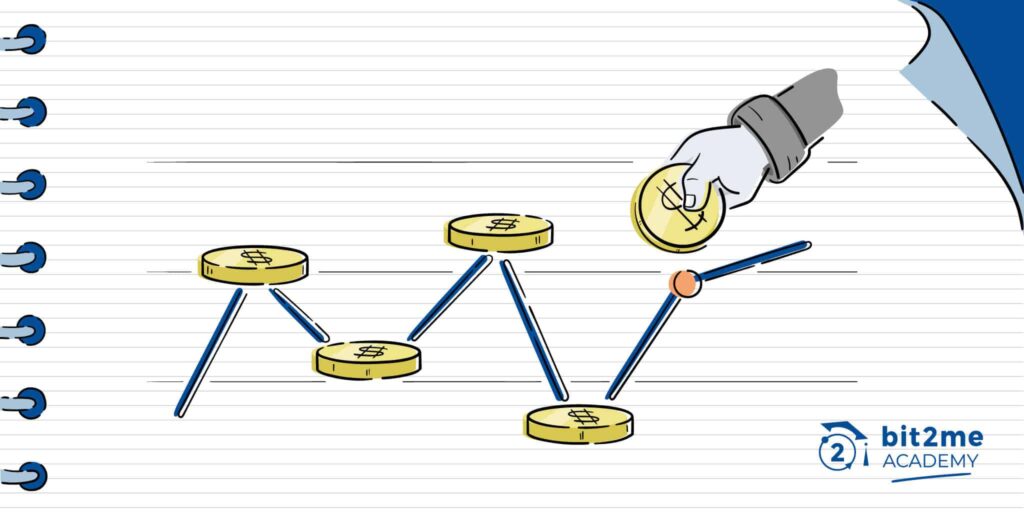Dollar-Cost Averaging (DCA) is a powerful investment strategy used by both beginners and seasoned investors to reduce the impact of market volatility. Instead of investing a lump sum all at once, DCA involves investing a fixed amount of money at regular intervals, regardless of the asset’s price. This method helps lower the average cost per share over time and minimizes emotional decision-making.
How Dollar-Cost Averaging Works
Let’s say you decide to invest $100 in Bitcoin or an ETF every month. Some months, the price will be high, and you’ll buy fewer units. Other months, the price will be lower, and you’ll buy more units. Over time, this averages out the purchase cost and helps avoid the risk of investing a large amount just before a market dip.
Here’s a simplified example:
| Month | Investment | Price per Unit | Units Bought |
|---|---|---|---|
| Jan | $100 | $10 | 10 |
| Feb | $100 | $20 | 5 |
| Mar | $100 | $5 | 20 |
| Total | $300 | — | 35 units |
The average price you paid is about $8.57 per unit, which is lower than the average market price across those three months. That’s the power of DCA.
Benefits of Dollar-Cost Averaging
1. Reduces Timing Risk
Trying to time the market is extremely difficult—even for professionals. DCA takes the guesswork out by spreading out your investment over time.
2. Builds Consistency
Investing on a regular schedule builds good financial habits and makes investing part of your routine.
3. Minimizes Emotional Investing
By sticking to a consistent plan, you’re less likely to buy when prices are high out of FOMO (fear of missing out) or sell when prices are low out of fear.
4. Works Well with Volatile Assets
DCA is particularly useful when investing in volatile assets like cryptocurrencies or tech stocks, where prices swing dramatically.
When Dollar-Cost Averaging Works Best
- Long-Term Investors: Those looking to build wealth over years, not weeks.
- Volatile Markets: Markets with unpredictable price movements.
- Fixed Income Investors: People who receive a regular paycheck and want to invest a portion regularly.
It’s also a great strategy for investing in index funds, ETFs, and even cryptocurrencies like Bitcoin or Ethereum.
Limitations to Keep in Mind
- Slower Gains in Bull Markets: If prices are steadily rising, DCA might lead to a higher average cost than a lump-sum investment made earlier.
- Requires Discipline: You must stick with the plan, even during market dips.
- Doesn’t Eliminate Risk Entirely: It reduces risk but doesn’t remove it completely.
For further reading, check out this article by Charles Schwab on DCA.
Dollar-Cost Averaging vs. Lump Sum Investing
| Feature | Dollar-Cost Averaging | Lump Sum Investing |
|---|---|---|
| Investment Timing | Spread out | All at once |
| Risk | Lower short-term risk | Higher short-term risk |
| Emotional Discipline | Encouraged | Requires self-control |
| Potential Returns | Moderate | Higher in bull markets |
Should You Use Dollar-Cost Averaging?
If you’re looking for a straightforward, disciplined way to invest and reduce the emotional highs and lows of market timing, Dollar-Cost Averaging is a strong strategy. It’s especially useful for people who are new to investing or want to build a portfolio gradually.



